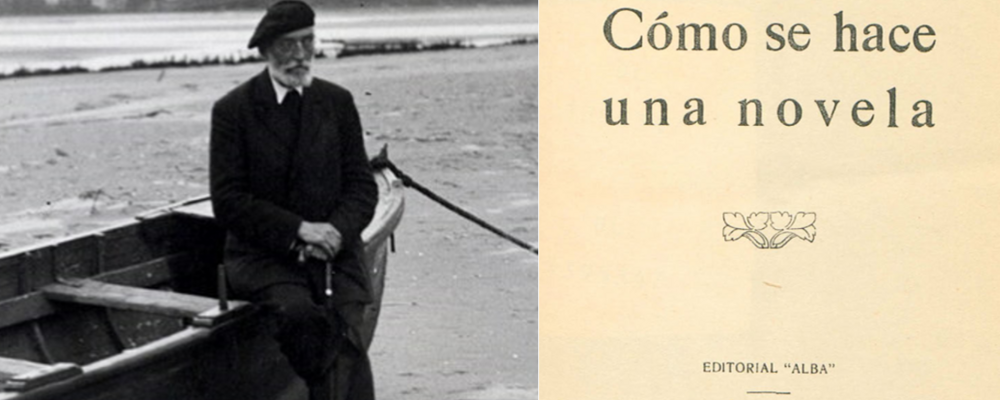Unamuno is best known for his philosophically witty novels, such as Niebla (1914, Dimma in Swedish edition 1928), the first novel in which the protagonist eventually realizes that he is a fictional character and indignantly seeks out the writer Unamuno to discuss this. Another novel that reflects Unamuno's religious interests is Abel Sánchez (1917, in Swedish with the same title in 2021), inspired by the biblical story of Cain and Abel.
Unamuno managed to be appointed and dismissed as rector of the University of Salamanca on three occasions and by three different governments: first under the Monarchy, then by the Republic and finally by the Franco side during the beginning of the Spanish Civil War. For most of the 1920s, Unamuno lived in exile in France because of his criticism of the Spanish military rule under Primo de Rivera. It was there, in Paris and Hendaye, that he compiled the text Cómo se hace una novela, a strange mix between many different genres: autobiography, fiction, literary theory and more.
In Spanish / En español:
Miguel de Unamuno (1864–1936) fue uno de los escritores más influyentes de España en el comienzo del siglo XX. Joakim Lilljegren, bibliotecario en la Biblioteca universitaria de Gotemburgo, presenta la vida y obra de Unamuno y su proyecto actual de traducir un libro de Unamuno, Cómo se hace una novela, al sueco.
El seminario se imparte en español. Es posible participar por Zoom, para obtener el enlace contacta a Anna Forné.
Unamuno es más conocido por sus novelas (o nivolas) ingeniosas y filosóficas, entre ellas Niebla (1914, Dimma en la edición sueca de 1928), la primera novela donde el protagonista poco a poco se da cuenta de que esun carácter fictivo, e indignado va a ver al escritor Don Miguel para discutirlo con él. Otra novela que refleja los intereses religiosos de Unamuno es Abel Sánchez(1917, publicado en sueco con el mismo título en 2021), inspirado por el cuento bíblico sobre Caín y Abel.
Popular y respetado, pero con el tiempo imposible en todos los campos, Unamuno fue instalado (y luego echado) como rector de la Universidad de Salamanca en tres ocasiones de tres distintos gobiernos, primero durante la monarquía, luego durante la segunda república y al final del bando sublevado durante el comienzo de la guerra civil española. La mayoría de la década de los 1920 vivió en destierro en Francia debido a su crítica al régimen militar de Primo de Rivera. Fue allí, en París y Hendaya, donde escribió el texto Cómo se hace una novela, una mezcla rara de varios géneros: autobiografía, ficción, teoría literaria etcétera.
